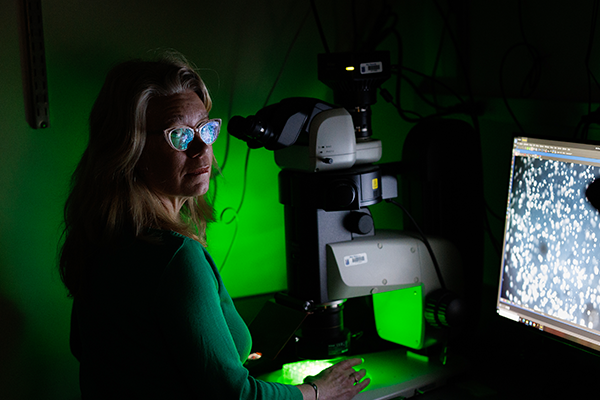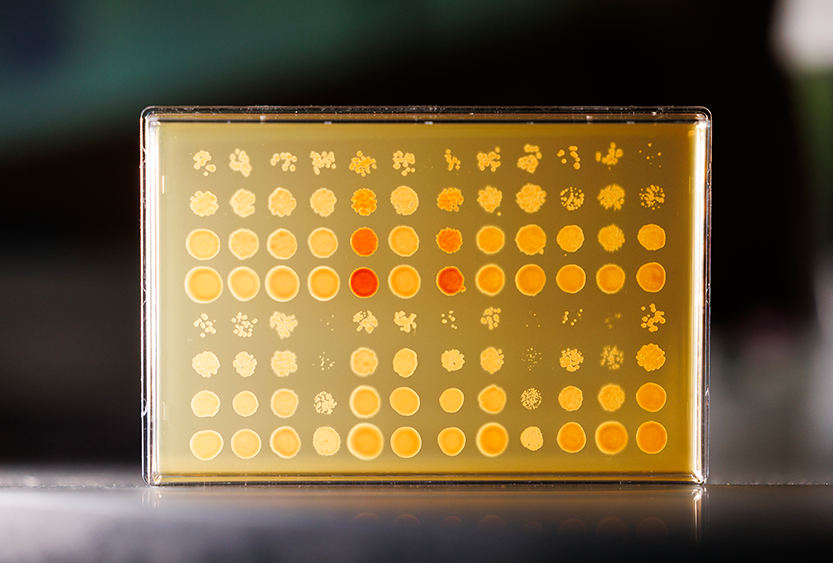
In the narrative about climate change, we often focus on the big and visible – like shrinking glaciers and churning hurricanes. But there’s another world, microscopic and hidden, that’s just as crucial and the focus of a new study by Amy Gladfelter, PhD, a cell biologist at Duke University School of Medicine.
Her research published July 31 in Current Biology, a Cell Press journal, identifies a shape-shifting protein that can tolerate changes and still function, possibly even better under new conditions. This adaptability might help some organisms, like fungi and plants, cope with climate change. Think heat-tolerant soybean crops.
It could also mean fungi will adapt to survive in warmer temperatures, spawning dangerous pathogens like the scenarios depicted in “The Last of Us.”
“There is a lot of attention given to more charismatic and large creatures facing climate stress, but much less about the invisible world that is essential for life,” said Gladfelter, a professor in the Department of Cell Biology and 2023 Duke Science and Technology scholar.

Her lab has long studied Ashbya gossypii, a tiny fungus, learning about its growth and development. Collaborating with study co-author Fred Dietrich, PhD, associate professor in the Department of Molecular Genetics and Microbiology, who sequenced the genome of Ashbya and collected various strains from different climates, the Duke team set out to explore how this fungus adapts to temperature changes.
In the new study, the team revealed that a disordered protein known as Whi3, which plays a key role in how Ashbya grows, is critical for temperature adaptation.
Traditional science views proteins as needing a specific shape to work properly. Gladfelter and others have discovered “intrinsically disordered proteins,” known as IDPs, can shape shift, changing between many configurations and thus appear “disordered.” The study suggests that IDPs may be a common mechanism for temperature adaptation across various organisms.
“Because these are highly flexible regions, they can potentially tolerate more changes in their sequences and still function,” said Gladfelter, a member of the American Academy of Arts and Sciences. “Because disordered protein sequences are not constrained by having to maintain one shape or form to function, they can evolve much faster.
“We think that changes in these kinds of proteins are a fast-track for organisms to adapt to changes in their environment,” she said.
How well the Whi3 protein works depends on where the fungus originally came from—whether a cold region like Wisconsin or a warm one like Florida. Fungi from different climates have adapted to their specific temperature ranges.
For the study, the team experimented with “swapping,” Whi3 protein sequences between isolates from diverse climates. Their work demonstrated that subtle sequence changes could be applied to genetically engineer plants and soil microbes to become more tolerant of climate change, functioning normally across a range of temperatures.

Gladfelter is working with other labs at Duke to understand the rules that govern how natural and synthetic proteins are optimized to specific temperatures.
The insights could be used to enhance crop resilience, potentially helping agriculture withstand extreme weather conditions, or to understand how to treat fungal pathogens.
“I think it gives some hope, that at least for species with short generation time, temperature adaptation might happen quicker when we might have anticipated because these disordered proteins evolve more easily,” Gladfelter said.
“If we understand the basic cell biology of some critical organisms, we can also potentially replace some critical IDP sequences that may make them more resilient in the face of stress.”
Additional Authors: Benjamin M. Stormo; Grace A. McLaughlin; Ameya P. Jalihal; Logan K. Frederick; Sierra J. Cole; Ian Seim; and Ashutosh Chilkoti.
“Intrinsically-disordered sequences can tune fungal growth and the cell cycle for specific temperatures,” Current Biology, DOI: 10.1016/j.cub.2024.07.015